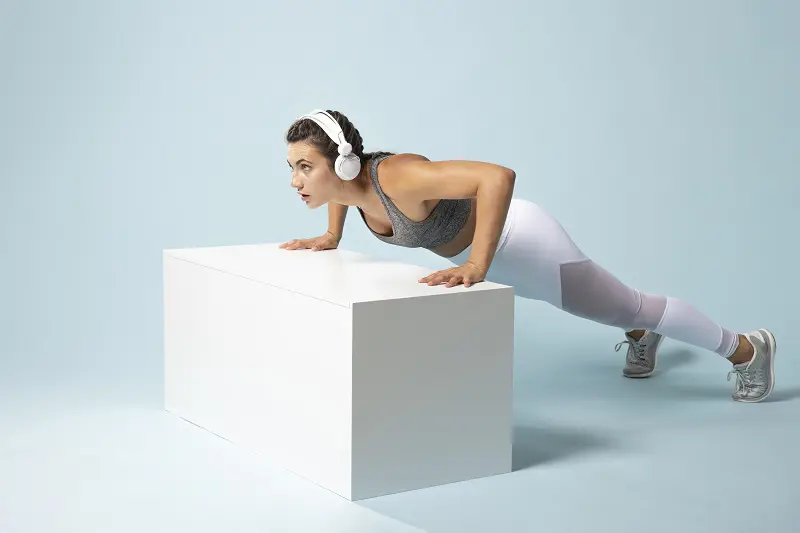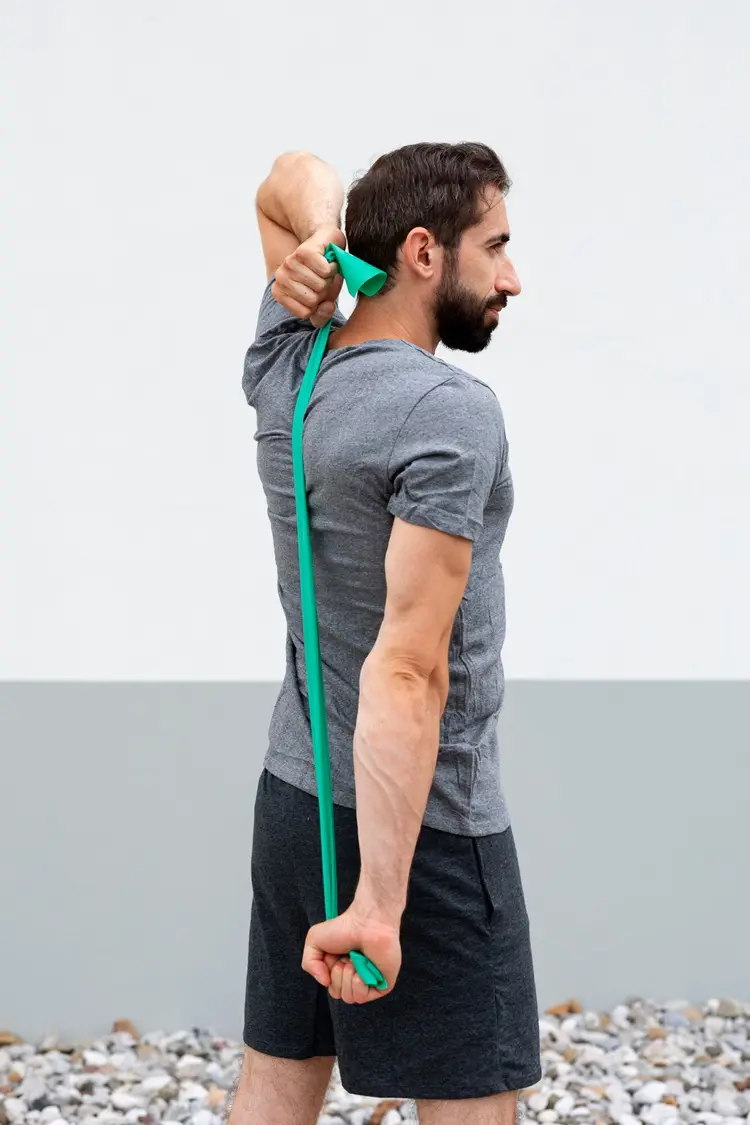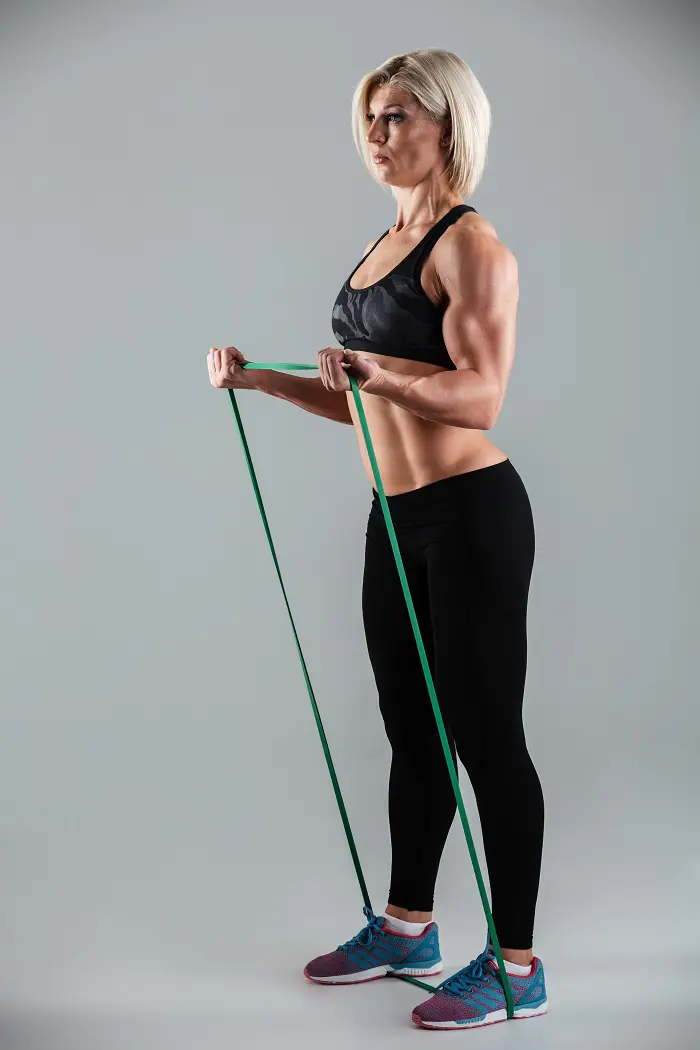11 IT Band Stretches To Relieve Muscles Stiffness
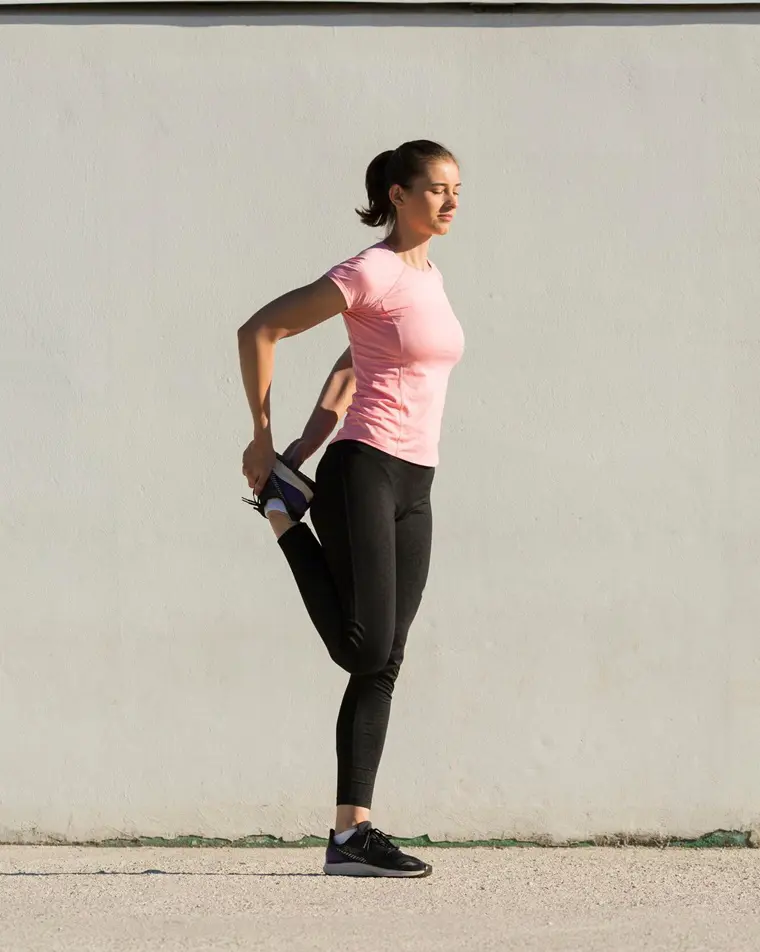
A tight IT band can lead to discomfort and stiffness in the knee, which may be especially bothersome for runners and those who stay physically active. Regular stretching of the IT band improves flexibility and prevents injuries in the hip, knee, and outer thigh.
Incorporating a variety of stretches into your routine will also help strengthen your legs and enhance mobility. So, let’s check out 11 effective IT band stretches that can easily be practiced at home:
1. Supine IT Band Stretch
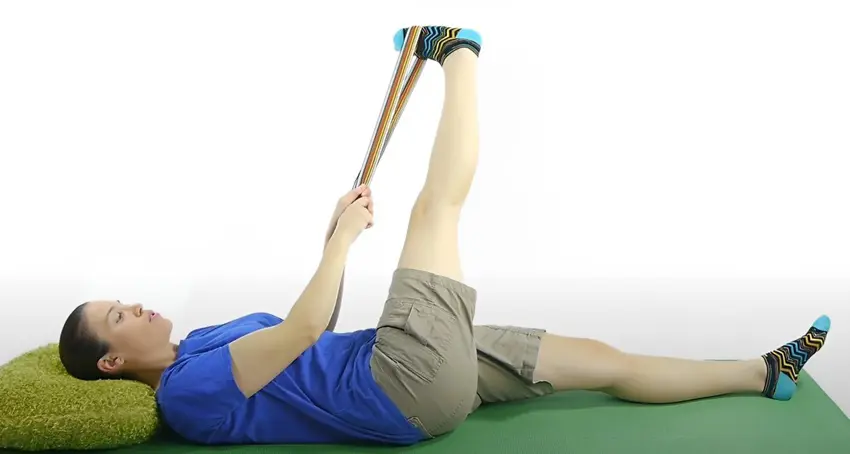
First on this list is the Supine IT Band Stretch. It is a unique stretch for iliotibial band that helps to calm and relax the legs and knees. You can try it as part of a warm up exercise and improve the mobility of the lower body.
Always remember to perform in a controlled and steady manner to avoid injuries. Plus, listen to the body and adjust the movement as needed.
How To Do It:
- Lie on your back with one leg bent and the other straight out. Loop a resistance band across the arch of the bent leg.
- Slowly extend the bent leg toward the opposite shoulder while holding the ends of the band with both hands.
- Keep the back flat on the floor and the hips squared as you stretch.
- Pull softly to create tension in the knee.
- Hold for a few seconds while taking deep breaths.
- Return to the starting position and perform on the other side.
2. IT Band Foam Roll
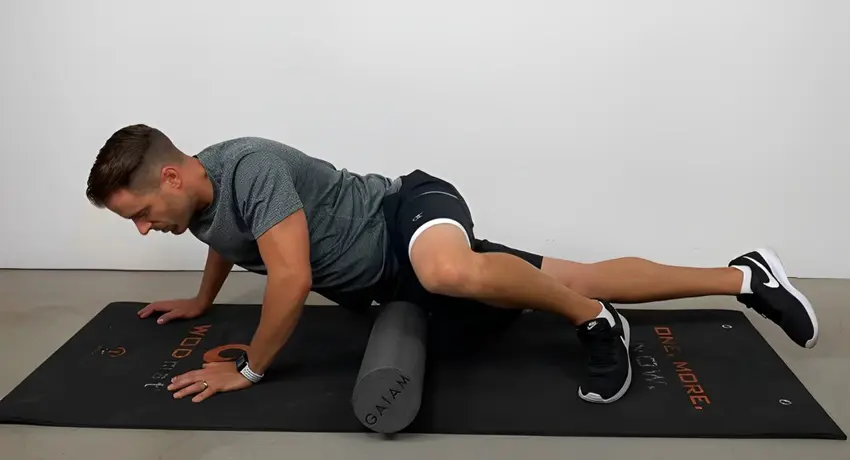
The IT Band Foam Roll loosens the iliotibial band muscles and gives you a greater range of motion. It also relieves tension after sitting for extended periods.
This exercise differs from regular foam roller workouts by targeting a specific area of the iliotibial band.
How To Do It:
- Lie on the side by keeping the top leg bent and the bottom leg straight down.
- Support the body on the ground using the foam roller.
- Position the foam roller on the outside thigh.
- Slowly roll the body forward by moving the foam roller from the knee to just below the hip.
- Apply gentle pressure while rolling and stop at any constricted areas.
- Continue rolling for a minute or two and flip to the other side.
- Repeat for the required number of reps.
3. Frog Stretch
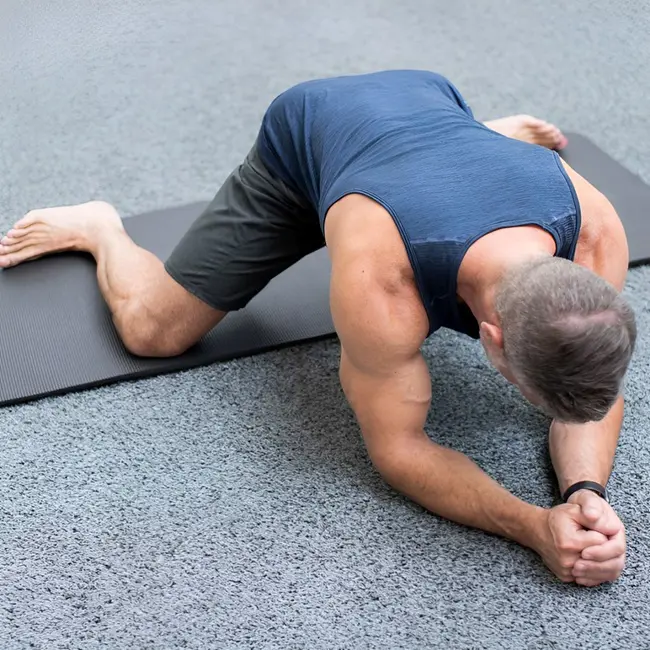
This stretch mimics a frog's sitting stance and helps strengthen the iliotibial band, which often tightens from long periods of sitting or intense activity. Imagine yourself as a small frog stretching after taking a big jump to add even more fun!
You can mix it up by softly rocking from side to side to release even more tension or simply holding the pose a little longer to deepen the stretch.
How To Do It:
- Begin on all fours with the knees wide and toes turned outward.
- Keep the back straight and get support with your hands placed firmly on the ground.
- Position the knees further apart by leaning forward to increase the intensity.
- Don't let the upper body drop to the ground, and keep the chest raised.
- Work your way back to the beginning position after holding for 20 to 30 seconds.
4. Butterfly Stretch

The Butterfly Stretch imitates the butterfly pose and is great for opening up the hips and stretching the inner thighs. It also does an excellent job of releasing stress from the IT band.
These iliotibial band stretches target the muscles surrounding the connective tissue in order to increase flexibility. It is also a great workout for relieving pain on the outside of the thigh and in the hip area.
How To Do It:
- Keep the spine in a neutral position and extend the legs in front.
- Rotate the knees inward as you bring the feet together.
- Allow the knees to drop outward until your legs are in a diamond shape.
- Gently bring the soles toward the body.
- Avoid letting your back hunch and focus on keeping it straight.
- Press the knees toward the ground to increase the stretch in the inner thighs.
- Breathe deeply and hold this posture for 20 to 30 seconds.
5. Seated Cross Twist

A superb lower back exercise for increasing iliotibial band mobility is the Seated Cross Twist. It gives you a full-body stretch by working your shoulders, obliques, and back. Use your arm while twisting and maintain a straight back to increase the intensity of the stretch.
Remember to maintain proper form to get the most out of this exercise and engage your core to protect your lower back.
How To Do It:
- Sit on the floor with the legs straight in front of you.
- Bend the right knee and cross it over the left leg. Your foot must be flat on the floor.
- Then, place the left elbow on the outside of the right knee.
- Keep the right hand behind you with your fingers pointing down for support.
- Exhale and slowly twist your torso to the right after taking a breath to stretch your spine.
- Repeat on the opposite side after holding the stretch for 15 to 20 seconds.
6. Side-Lying Stretch
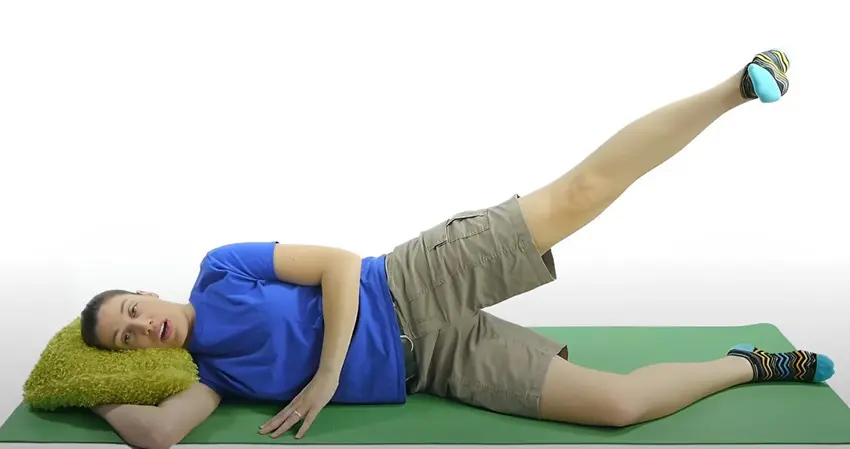
Do you want to work on your IT band and outer thigh stiffness? Well, you can perform the side-lying stretch, an effective knee stretch for reducing muscle tension and increasing flexibility in these areas. Integrate this easy-to-do stretch into your daily regimen to keep your legs feeling strong.
Avoid pushing yourself too hard because this can make you uncomfortable. Stretching gently will progressively improve the mobility of the leg.
How To Do It:
- Place your head on a pillow and lie on your side with your legs stacked on top of another.
- Raise the top leg and move sideways while maintaining a straight back.
- Make sure your hips remain stacked throughout the stretch too.
- Feel your outer thigh stretch as you hold the position for 10 to 15 seconds.
- Repeat on the opposite side.
7. Pigeon Pose
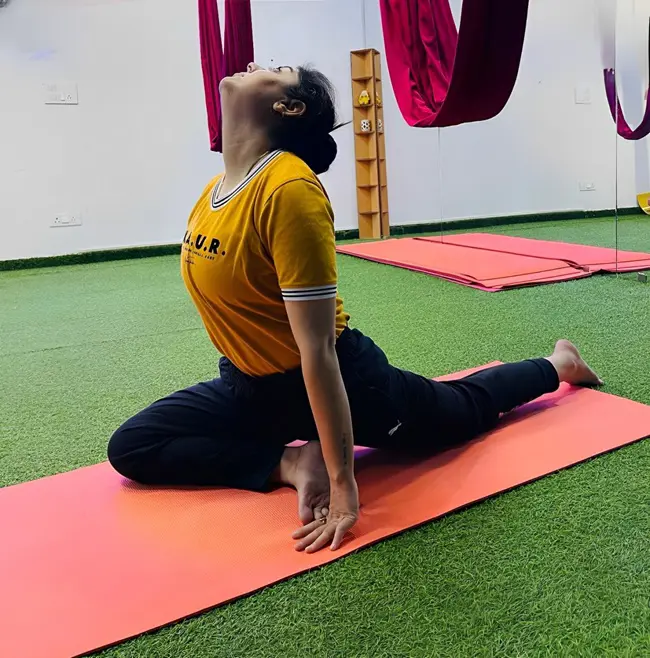
Pigeon Pose is a common stretch for athletes to relieve stress in the IT band. It deeply stretches the hip rotators and helps to release tension along the outer thigh.
This pose also increases the range of motion and flexibility in the hips and legs, allowing for a more fluid movement and stabilizing the joints.
How To Do It:
- Start on all fours, lift your hips, and move into a downward dog pose.
- Your shin should lean across the mat as you pull the right knee forward and bend it behind the right wrist.
- Keep your hips square to the front and extend your left leg straight out behind you.
- Hinge forward toward the mat, keeping your hips level. Use your hands to support yourself if needed.
- You may press the torso backward to get a powerful stretch.
- Perform 8 to 10 reps.
8. Glute Bridge
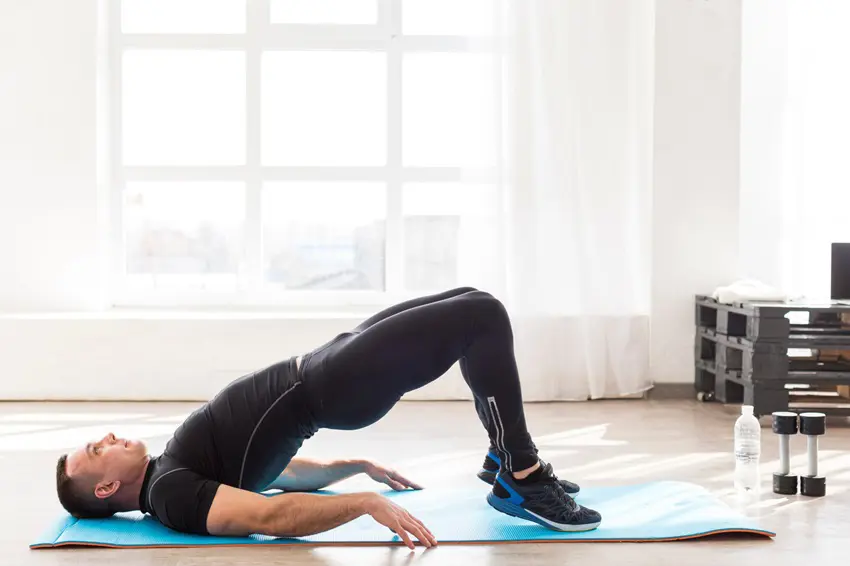
The glute bridge is another outstanding exercise for activating the IT band. It's a safe option for people of all fitness levels because it isolates the glute muscles without straining the lower back.
You can practice different variations of the glute bridge like single-leg and banded glute bridge for extra intensity.
How To Do It:
- First, lie on the back and bend the knees.
- Place the arms at the sides with the palm facing down.
- Push through the heels to lift the hips off the ground until your shoulders and knees are in a straight line.
- Hold at the top for a brief moment to engage the hamstrings and glutes.
- Lower the hips down to the starting position slowly and repeat for the desired number of reps.
9. Figure Four Stretch

Adding the Figure Four stretch to your workout routine is like discovering a secret weapon for the iliotibial band. This is the perfect stretch for anyone who wants to incorporate some relaxation into their workout.
How To Do It:
- Bend both knees and lie on your back.
- Make a "figure four" with the legs by crossing the right ankle over the left knee.
- Gently bring the left thigh toward the chest with both hands extended behind it.
- Keep the shoulders and head flat on the ground.
- Breathe deeply while holding the stretch for 10 to 20 seconds.
- Continue on the opposite side in a controlled manner.
10. Seated Forward Fold
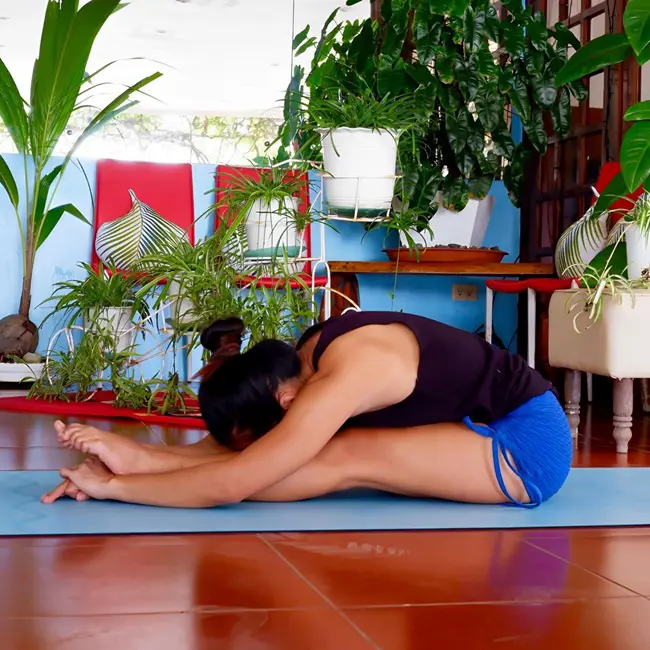
The Seated Forward Fold is an excellent IT band stretching exercise that opens the sides of the thighs. It is especially helpful for individuals whose work involves long periods of sitting or repetitive leg movements.
Be careful not to overstretch as it could easily lead to lower back pain.
How To Do It:
- Sit on the floor and extend the legs forward.
- Fold at the hips and move the upper body towards the knees.
- Breathe deeply as you hold the stretch for a few seconds.
- Slowly return to the beginning position and continue doing it 5-10 times.
11. Standing Quad Stretch
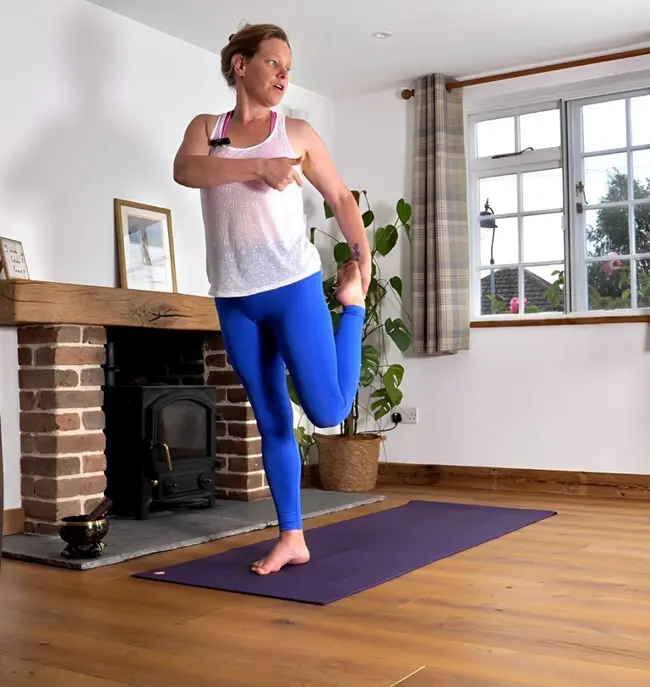
Last on the list is Standing Quad Stretch, a fantastic option for exercising the iliotibial band muscles. This will help lengthen the hip flexors and the front of the thighs that might have gotten tight from exercising for long hours.
This is a simple yet effective stretch to maintain a good range of motion in the lower limbs. It can be easily integrated into any workout schedule as part of a morning stretch or as a quick way to unwind and refresh during the day.
How To Do It:
- Stand with the feet hip width apart.
- Bend the right knee towards the back and grab the right ankle.
- Gently pull the foot towards the glutes.
- Avoid arching the lower back and engage the core for support.
- Take a deep breath and repeat on the other side.
What Causes Tight IT Bands?
1. Lack Of Physical Exercise
The iliotibial band becomes inflexible and rigid if you do not exercise the area consistently. It also tends to get quite tight if the lateral thigh is not regularly stretched or mobilized.
2. Poor Posture
Poor posture is another cause of tight iliotibial band, especially after a long period of standing or sitting. Slouching may cause the hips and legs to become misaligned and place uneven stress.
There could be additional tension in the band due to this misalignment. Over time, it may eventually cause soreness, tightness, or even IT band syndrome.
3. Muscle Imbalance
A muscle imbalance happens when one group of muscles becomes stronger or tighter than the opposing group. This imbalance may result in strange movement patterns and tend to stress the tissues around the area.
Corrective adjustments of such imbalances through particular stretches and exercises could avoid these problems.
4. Poor Footwear
A shoe that doesn't fit right or doesn't provide proper arch support can cause the foot to become strained. This puts additional stress on the hip and legs. Wearing shoes that perfectly fit and support the foot can really avoid putting further stress on your iliotibial band.
5. Tight Hip Flexors
Tight hip flexors can worsen tension in the iliotibial band by altering how the body moves and distributes force. It also reduces the range of motion around the hip.
However, including some stretching exercises for the IT band can help improve its flexibility.
When To See A Doctor?
It may be time to see a doctor if you experience sharp pain in the iliotibial band while doing these stretches. It's important to seek medical advice right away, as IT band issues can worsen with continued activity. Early intervention is key to preventing the condition from getting worse.
The doctor might prescribe physical therapy or other treatments depending on the cause of the problem.
Other Remedies To Combat Iliotibial Band
Several other remedies can also alleviate the iliotibial band problem and quicken the healing process. Here are some of the most common remedies to help you prevent IT band discomfort:
- Deep Tissue Massage: Deep tissue massage can be applied for relaxation in regions where the band may be tight.
- Ice And Heat Therapy: This therapy is important to encourage blood flow and reduce inflammation. So, try applying heat and ice therapy whenever you feel discomfort.
- Proper Footwear: Correct footwear could aid by improving alignment and lessening tension on the band. Always choose perfectly sized shoes and socks to avoid these issues.
- Warm-Up Routine: Proper warm-ups before exercising might prevent tension on the iliotibial band since they promote flexibility and blood flow.
- Rest and Recovery: Avoid activities that tend to worsen the condition. Get enough rest to help prevent further strain.
- Physical Therapy: A physical therapist can suggest specific rehabilitation exercises and other therapies to accelerate the recovery process.
Disclaimer: The details provided in this article are for educational purposes only. They should not be considered as a medical advice.
Recent posts
Exercises
Exercises
10 Trapezius Stretches To Relieve Muscle Stiffness
Responsible for rotating the scapula, the trapezius muscles are triangular in shape and located in the upper back. They also play a role in extending the neck and contribute to arm stability. Since this muscle does a lot of work, it can become stiff ...
Exercises
20 Different Variations Of Push Up For Beginner To Experts
Pushups are commonly practiced for building upper body strength - and for good reason. They could also be the very first workout we ever tried. No expensive equipment is needed, and it can be done from the comfort of our home. If we are getting bored...
Exercises
20 Squat Variations For Every Fitness Level
Squats have been a popular exercise for many fitness enthusiasts. They are effective for strengthening key lower-body muscles like the glutes, hamstrings, quadriceps, and calves. Practicing them daily can lead to a toned butt - an aesthetic goal for ...
Exercises
12 Golfers Elbow Exercises For Quick Pain Relief
Golfer’s elbow, aka medial epicondylitis, happens when the tendons connecting your forearm muscles to the bony inside part of your elbow get inflamed. This can cause pain and throw off your physical well-being. To tackle this, there are plenty ...
Exercises
11 Exercises To Gain Weight For Bulking Up At Home
Bulking up at home is possible with the correct exercises and a well-structured diet. You do not need any fancy equipment or a complex setup to perform these workouts. Focusing on compound movements and gradually increasing intensity will maximize yo...
Exercises
12 Serratus Anterior Exercises For Better Shoulder Health
The serratus anterior, aka the boxer muscles, plays a key role in shoulder stability and range of motion. Strengthening this muscle not only enhances mobility but also helps prevent injuries and improve posture. Including targeted workouts in your fi...

